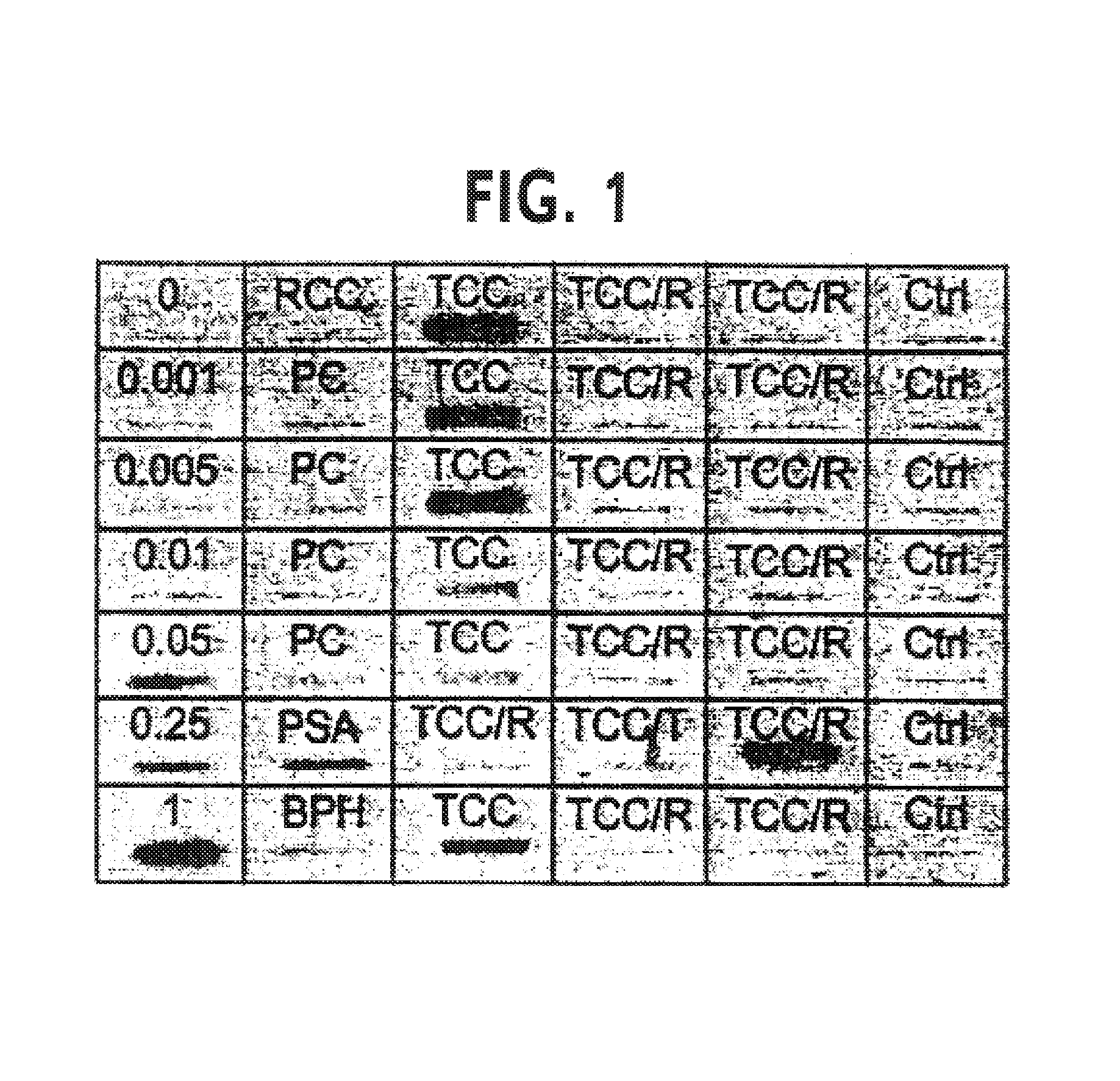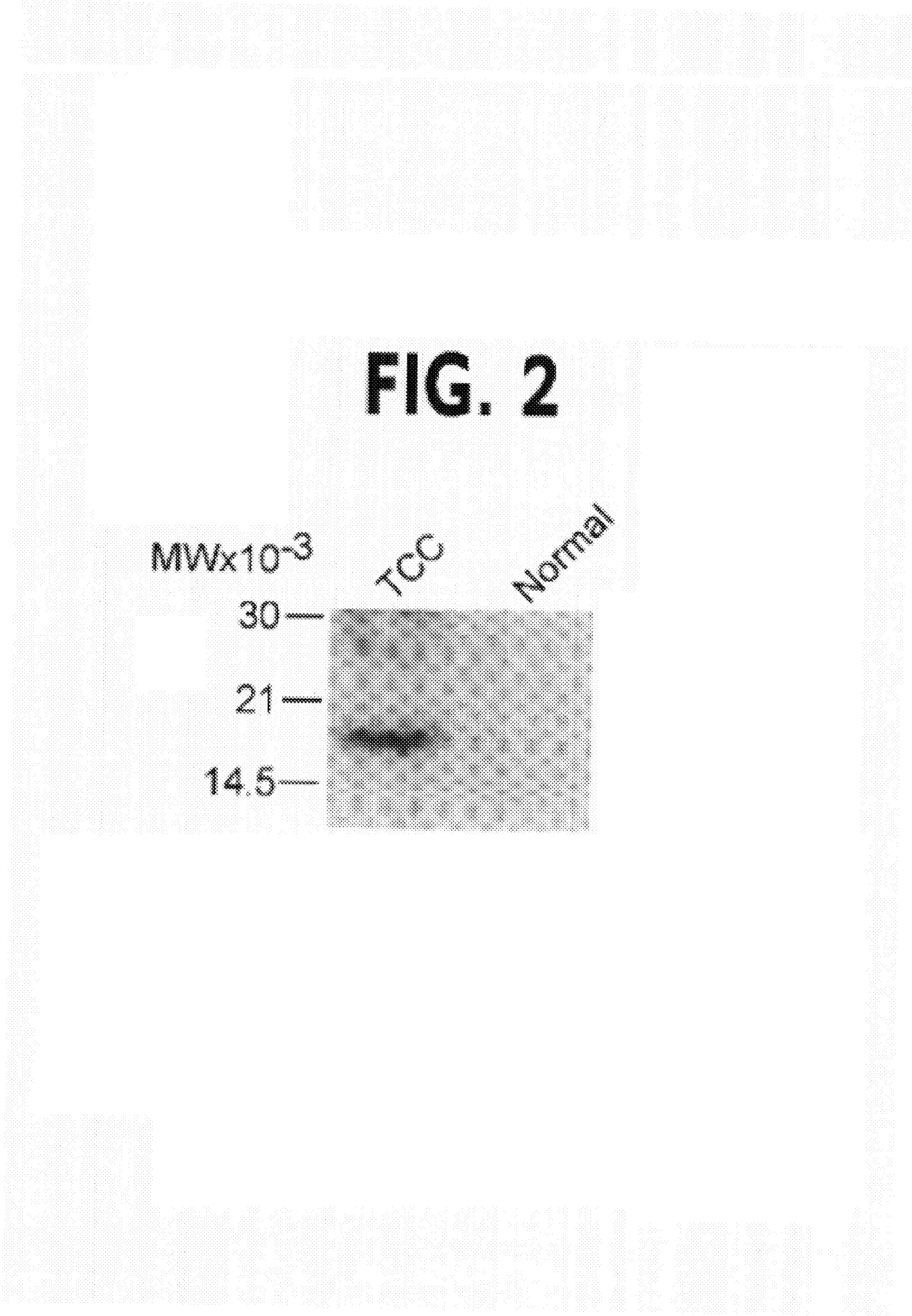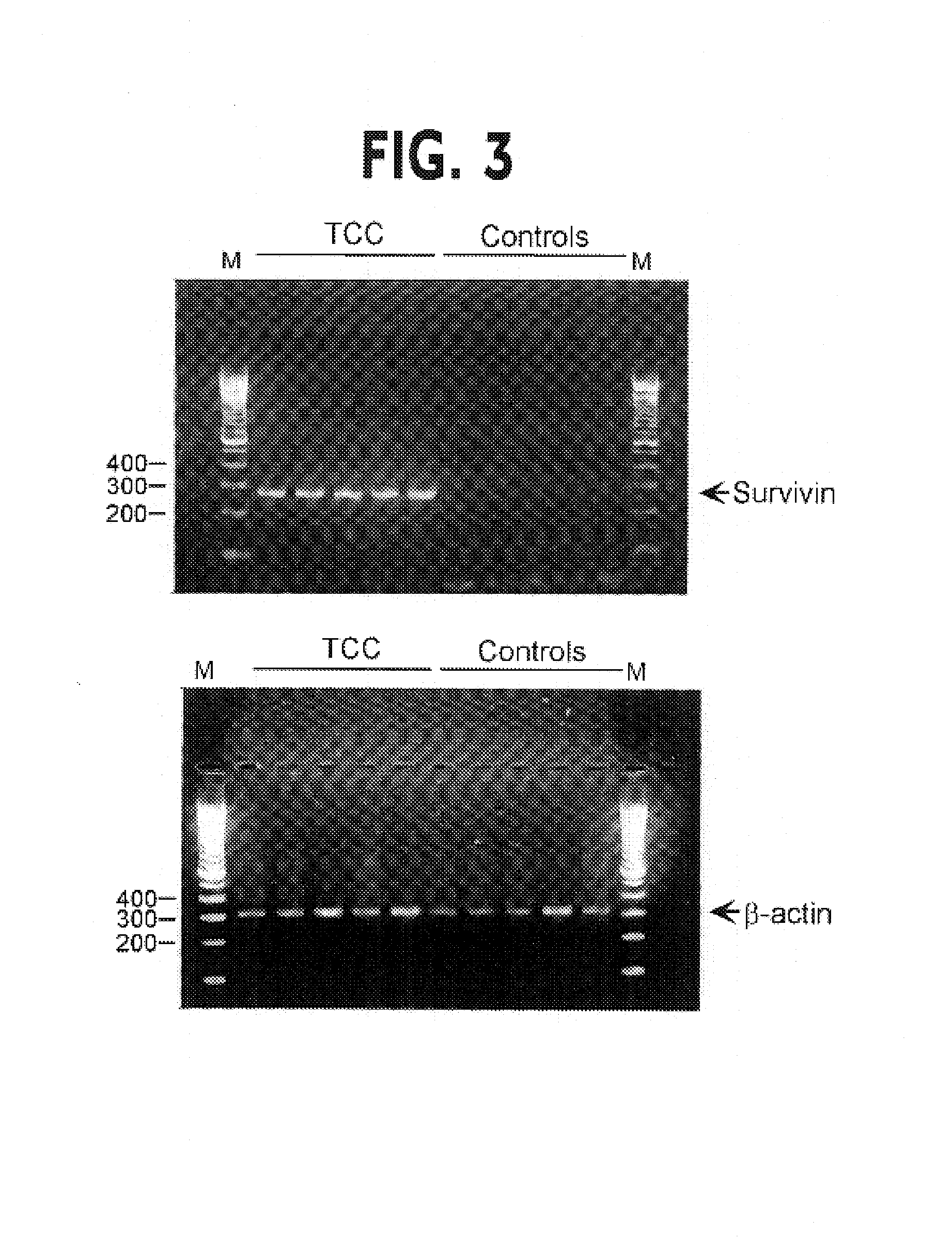Detection of survivin in the biological fluids of cancer patients
a biological fluid and survivin technology, applied in the field of cancer diagnosis comprising detection of survivin in biological fluids of patients, can solve problems such as poor prognosis of survivin
- Summary
- Abstract
- Description
- Claims
- Application Information
AI Technical Summary
Benefits of technology
Problems solved by technology
Method used
Image
Examples
example 1
Urine Detection of Survivin Using the Bio-Dot SF Module
[0115]Urine specimens were filtered onto a nitrocellulose membrane using a microfiltration apparatus in a module providing a 48-well slot format. The blot was analyzed for the presence of survivin using a polyclonal antibody. The protocol is as follows: urine was collected and stored at −80° C. until analysis. On the day of analysis, urine samples were centrifuged at 20,000×g for 20 min. Meanwhile, the Bio-Dot Microfiltration Apparatus was assembled with a 0.2 μm nitrocellulose membrane (Bio-Rad Laboratories, Hercules, Calif.) and moistened in 20 mM Tris-buffered saline (pH 7.5). Then, the urine supernatant (300 μl) along with increasing concentrations of E. coli-expressed recombinant survivin (Li et al., Nature, 1998, 396: 580–84) as a standard (0.001–1.0 μg / ml) in 300 μl of TBS were filtered onto the membrane. After filtration, the membrane was dried, blocked in 5% Blotto and 0.01% sodium azide in PBS, pH 7.4, for 12 h at 4° C...
example 2
Western Blotting
[0116]Urine specimens (100 ml) were centrifuged at 1,200×g for 10 min at 22° C., and the cell pellet was washed twice in TBS and solubilized in 0.5% Triton X-100 in the presence of protease inhibitors for 30 min at 4° C. Samples were separated by SDS gel electrophoresis, transferred to nylon membranes (Millipore, Corp.), and further incubated with 1 μg / ml of an antibody to survivin (Grossman et al., J. Invest. Dermatol., 1999, 113:1076–81) followed by horseradish peroxidase (HRP)-conjugated goat anti-rabbit IgG and chemiluminescence.
example 3
RT-PCR
[0117]Fifty milliliters of clean catch urine was obtained from 15 patients with new or recurrent urothelial cancer, 2 patients with treated bladder cancer, 1 patient with prostate cancer, 1 patient with non-neoplastic urinary tract disease and 1 healthy volunteer. Total RNA was isolated from urine pellets using the Trizol reagent (Life Technologies, Inc., Gaithersburg, Md., U.S.A.). Single strand cDNA was synthesized by random priming of 1–5 μg total RNA using 1 μl of Superscript reverse transcriptase (Gibco BRL, Life Technologies, Inc., Gaithersburg, Md., U.S.A.) for 1 h at 43° C. After heating at 70° C. for 15 min, a first amplification reaction was carried out with survivin primers 5′-CTGCCTGGCAGCCCTTTCTCAA-3′ (forward; SEQ ID NO: 1) and 5′AATAAACCCTGGAAGTGGTGCA-3′ (reverse; SEQ ID NO: 2) with denaturation at 94° C. for 15 sec, annealing at 53° C. for 15 sec and extension at 72° C. for 1 min for 20 cycles, followed by incubation at 72° C. for 5 min. A 463-base pair (bp) fra...
PUM
| Property | Measurement | Unit |
|---|---|---|
| Chemiluminescence | aaaaa | aaaaa |
Abstract
Description
Claims
Application Information
 Login to View More
Login to View More - R&D
- Intellectual Property
- Life Sciences
- Materials
- Tech Scout
- Unparalleled Data Quality
- Higher Quality Content
- 60% Fewer Hallucinations
Browse by: Latest US Patents, China's latest patents, Technical Efficacy Thesaurus, Application Domain, Technology Topic, Popular Technical Reports.
© 2025 PatSnap. All rights reserved.Legal|Privacy policy|Modern Slavery Act Transparency Statement|Sitemap|About US| Contact US: help@patsnap.com



